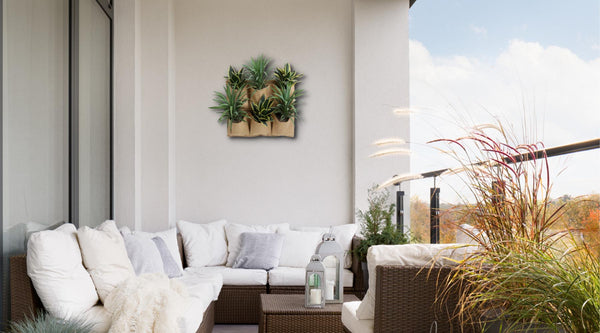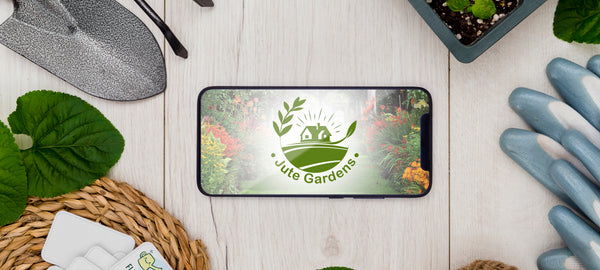
Vertical Gardening For Small Spaces
Introduction
Vertical gardening is an innovative approach to gardening that allows you to grow plants in a small space without sacrificing yield. By using vertical structures such as walls, fences, or trellises, you can grow a variety of plants in a small area and create a beautiful and functional garden.
Vertical gardening is perfect for small spaces such as apartments, balconies, and patios. It's also a great solution for people who want to grow a garden but have limited mobility or physical ability. With vertical gardening, you can have a garden even if you have a small backyard or no yard at all.
Advantages Of A Vertical Garden
One of the biggest advantages of vertical gardening is that it makes the most of limited space. Instead of growing plants horizontally, you can grow them vertically, which allows you to maximize the number of plants you can grow in a small area. This is especially useful for small balconies and patios, where space is at a premium.
Another advantage of vertical gardening is that it can be used to create privacy. By growing plants on a wall or fence, you can create a natural barrier that blocks unwanted views and adds privacy to your outdoor living space. This is especially useful for people who live in apartments or townhouses, where privacy can be hard to come by.
Plants To Grow
Vertical gardening is also great for growing a variety of plants. You can grow anything from herbs and vegetables to flowers and succulents. This is perfect for people who want to grow a variety of plants but have limited space. With vertical gardening, you can grow a variety of plants in a small area, which allows you to enjoy a diverse garden even if you have a small balcony or patio.
Varieties Of Vertical Gardens
There are many ways to create a vertical garden. One of the most popular methods is to use a living wall. A living wall is a vertical garden that is created using a frame and a series of planters. The plants are grown in the planters and the frame holds everything in place. Living walls can be created using a variety of materials such as wood, metal, or even recycled materials.
Trellis
Another popular method is to use a trellis. A trellis is a structure that is used to support plants as they grow. Trellises can be made from a variety of materials such as wood, metal, or plastic. They can be freestanding or attached to a wall. Trellises are perfect for plants that need support such as vines, climbing roses, and cucumbers.
Pots and Planters
Vertical gardening can also be done using a series of pots or planters. This is perfect for people who want to create a vertical garden but don’t want to invest in a living wall or trellis. Pots and planters can be hung from a wall or fence, or they can be placed on shelves. This is a great option for people who want to create a vertical garden but don’t want to invest in a lot of materials.
Choosing Plants
When it comes to choosing plants for your vertical garden, there are a few things to consider. One of the most important things to consider is the light requirements of your plants. Some plants require a lot of sunlight, while others prefer shade. Make sure to choose plants that will thrive in the amount of sunlight your garden receives.
Watering
Another thing to consider is the watering needs of your plants. Some plants need to be watered frequently, while others are drought-tolerant. Make sure to choose plants that will thrive in the amount of water your garden receives.
Plant Size
Finally, consider the size of your plants. Some plants will grow to be very large, while others will stay small. Make sure to choose plants that will fit in the space you have available.
Creativity and Aesthetic
Vertical gardening is a great way to add greenery and beauty to small spaces. With a little creativity and some planning, you can create a stunning vertical garden that will add value to your home, provide privacy, and give you a place to grow your fruits, vegetables, and herbs.
When creating your vertical garden, think about the overall aesthetic you want to create. Are you looking for a lush, green wall or a more sculptural, architectural look? This will help guide your plant choices and the materials you use to create your garden.
Maintenance
Also, consider the maintenance requirements of your garden. Some plants require a lot of care and attention, while others are low maintenance. Consider your own time and energy limitations when making your plant selections.
Cost
Finally, consider the cost of creating your vertical garden. Living walls and trellises can be expensive to create while using pots or planters can be more budget-friendly. Keep in mind, however, that using pots or planters may require more frequent watering and may not have the same aesthetic impact as a living wall or trellis.
Jute Gardens' vertical gardens are inexpensive and easy to install.

Conclusion
In conclusion, vertical gardening is a great solution for small spaces. It allows you to maximize your gardening potential in a small area, create privacy, and grow a variety of plants. With a little creativity and planning, you can create a beautiful and functional vertical garden that will add value to your home and give you a place to grow your fruits, vegetables, and herbs.
Frequently Asked Questions
Q: What is vertical gardening?
A: Vertical gardening is an innovative approach to gardening that allows you to grow plants in a small space without sacrificing yield. It involves using vertical structures such as walls, fences, or trellises to grow a variety of plants in a small area, creating a beautiful and functional garden.
Q: Why is vertical gardening good for small spaces?
A: Vertical gardening is perfect for small spaces such as apartments, balconies, and patios. It maximizes the number of plants you can grow in a small area, making the most of limited space. It also allows you to create privacy by growing plants on a wall or fence.
Q: What kind of plants can I grow in a vertical garden?
A: You can grow anything from herbs and vegetables to flowers and succulents in a vertical garden. It allows you to grow a variety of plants in a small area, which allows you to enjoy a diverse garden even if you have a small balcony or patio.
Q: How do I create a vertical garden?
A: There are many ways to create a vertical garden, such as using a living wall, a trellis, or a series of pots or planters. It's important to choose the method that best suits your needs and preferences.
Q: What are the maintenance requirements of a vertical garden?
A: The maintenance requirements vary depending on the plants you choose and the method you use to create your garden. Some plants require more care and attention, while others are low maintenance. Consider your own time and energy limitations when making your plant selections.
Q: How much does it cost to create a vertical garden?
A: The cost of creating a vertical garden varies depending on the method you use. Living walls and trellises can be expensive to create while using pots or planters can be more budget-friendly. Keep in mind that using pots or planters may require more frequent watering and may not have the same aesthetic impact as a living wall or trellis.
Q: How can I ensure that my vertical garden will thrive?
A: It's important to choose plants that will thrive in the amount of sunlight and water your garden receives. Also, consider the size of your plants and how they will fit in the space you have available. Make sure to research and follow the care instructions for each of the plants in your garden for the best results.

